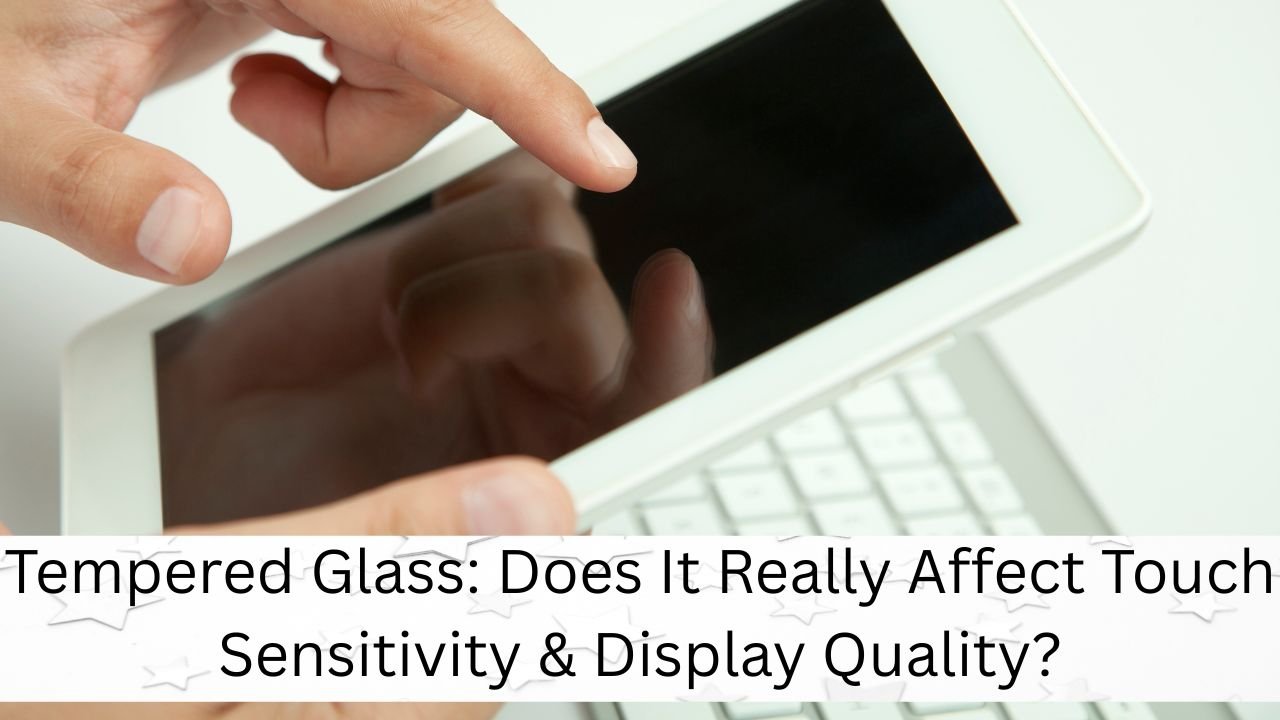Does Tempered Glass Really Affect Your Phone’s Performance?
Tempered glass is a must-have for protecting your screen, but here’s the catch—people worry it’ll mess with touch response or display clarity. The short truth? High-quality tempered glass rarely causes noticeable issues. Any difference in responsiveness is so tiny—measured in mere milliseconds—that you’d never feel it while scrolling, texting, or gaming.
But there are real reasons why some users, especially competitive mobile gamers or those using in-display fingerprint sensors, notice problems. This post will uncover why touch sensitivity or display clarity sometimes drops, how to avoid it, and which factors actually matter.
We’ll also share buying tips, troubleshooting fixes, and insights that come from years of real-world testing and expert experience. If you want a protector that shields your phone without sacrificing performance, you’re in the right place.
How Does a Touchscreen Really Work?
Your phone’s screen isn’t just glass; it’s a capacitive touch panel that senses electrical signals. Your finger, being conductive, alters the screen’s electrical field, and the phone registers that change as a touch input.
Any barrier—like a screen protector—must let this interaction happen flawlessly. Tiny air gaps, cheap adhesives, or excessive thickness block this signal, leading to lag or dead spots. That’s why the quality of the tempered glass and adhesive layer matters more than anything else.
Does Tempered Glass Affect Touch Sensitivity?
Not with a good protector. Premium tempered glass (0.3–0.33 mm) is almost invisible to your touchscreen. Optical Clear Adhesive (OCA) ensures a strong, bubble-free bond that feels like part of the original display.
Still, there are scenarios where touch response feels weaker:
Factors that reduce sensitivity
- Low-quality adhesive: Edge-only glue leaves micro-gaps, making touches misfire (see our installation guide).
- The Adhesive Layer: Unsung Hero (or Hidden Foe)
Poorly applied adhesive is the biggest culprit. UV liquid adhesive protectors (often for curved screens) provide full adhesion but require careful install to avoid glue seepage into ports (check UV tempered glass for curved displays). - Excessive thickness: Too-thick glass increases the gap between your finger and the sensors.
- Improper installation: Bubbles, dust, or misalignment create dead zones.
- Curved screens: Many curved-screen protectors rely on dot matrix adhesives that can reduce sensitivity.
- In-display fingerprint sensors:
- Ultrasonic sensors (Samsung Galaxy S series) rely on sound waves. A thick protector or uneven glue can block or slow recognition. Some premium protectors use gel-filled cutouts to fix this.
- Optical sensors are less affected but need a clean sensor area with no visible dot matrix, plus re-registering fingerprints after installation.
- Competitive mobile gamers: Some claim a theoretical micro-lag, but rigorous testing shows it’s imperceptible for daily use.
Pro Tip: Check Display Settings > Touch Sensitivity or Glove Mode on your phone and enable it after installing tempered glass. This quick tweak often fixes minor lag instantly. If you’re facing broader touchscreen issues, it’s worth checking out our touch responsiveness fixes guide, which includes steps that can help with similar sensor problems.
Does Tempered Glass Affect Display Quality?
A quality tempered glass should be optically clear. Industry standards ensure 99%+ light transmittance, so colors and brightness stay true. If you see a big difference, your glass isn’t premium.
When display clarity drops
- Poor optical clarity: Low-grade glass reduces light transmission efficiency, making screens look dim even at max brightness.
- Rainbow effect (Newton’s rings): Created by air gaps or inconsistent adhesive thickness. It shows as iridescent swirls on whites.
- Dot matrix patterns: Some edge-glue protectors use a grid of dots on the underside to prevent bubbles. It’s functional but can make the screen look grainy.
- Mottling or cloudiness: Caused by adhesive impurities or wear over time.
- Anti-glare or matte coatings: They reduce glare but slightly soften sharpness—a trade-off.
- Anti-reflective (AR) coatings: Found on high-end protectors, these enhance contrast and visibility by cutting surface reflections without adding haze.
- Oil smudges: A weak oleophobic coating traps fingerprints and reduces perceived clarity fast.
Quick Comparison Table
| Feature | High-Quality Tempered Glass | Cheap/Low-Quality Glass |
| Touch sensitivity | Near native response | Lag & dead spots |
| Display clarity | 99%+ transparency | Dull, cloudy view |
| Fingerprint sensor | Compatible (if designed right) | Failures common |
| Adhesive | Full OCA bonding | Edge-only gaps |
| Coating | Oleophobic & AR layers | Smudge magnets |
What to Look For in a Tempered Glass Protector
- Stick with known brands—they meet quality standards.
- Go thin—0.3 mm is ideal for balance.
- Full adhesive/OCA bonding—not edge-only.
- Case-friendly cut—prevents lifting on the sides (see best Galaxy Note 10 cases).
- Oleophobic coating—not just for smudge resistance but also for smoother swipes and a cleaner view.
- Fingerprint sensor support—especially for ultrasonic models.
- User reviews—look for mentions of zero sensitivity loss.
Troubleshooting Common Problems
Reduced touch sensitivity
- Turn on Touch Sensitivity or Glove Mode.
- Re-register fingerprints (especially with ultrasonic sensors).
- Remove bubbles or dust with a careful reinstall.
- Reboot your phone to recalibrate sensors.
Ghost touches or random taps
- Inspect for edge lifting or trapped dust.
- Consider a full-adhesive protector to fix signal issues.
Cloudy or dull display
- Clean oil smudges frequently.
- Check for dot matrix artifacts—upgrade if necessary.
- Make sure haze isn’t from matte coating you didn’t expect.
Why Tempered Glass is Still Worth It
Besides protection, there’s another perk: resale value. A phone with a pristine screen fetches a much higher trade-in price. Think of tempered glass as cheap insurance against scratches, drops, and lost value.
Final Verdict
Tempered glass doesn’t inherently harm touch or display quality. Problems only come from poor materials, bad installation, or device-specific quirks.
Investing in high-grade glass with OCA, oleophobic layers, and perfect fitment means you get protection and flawless usability. With the right brand and install, your phone stays safe and responsive.



